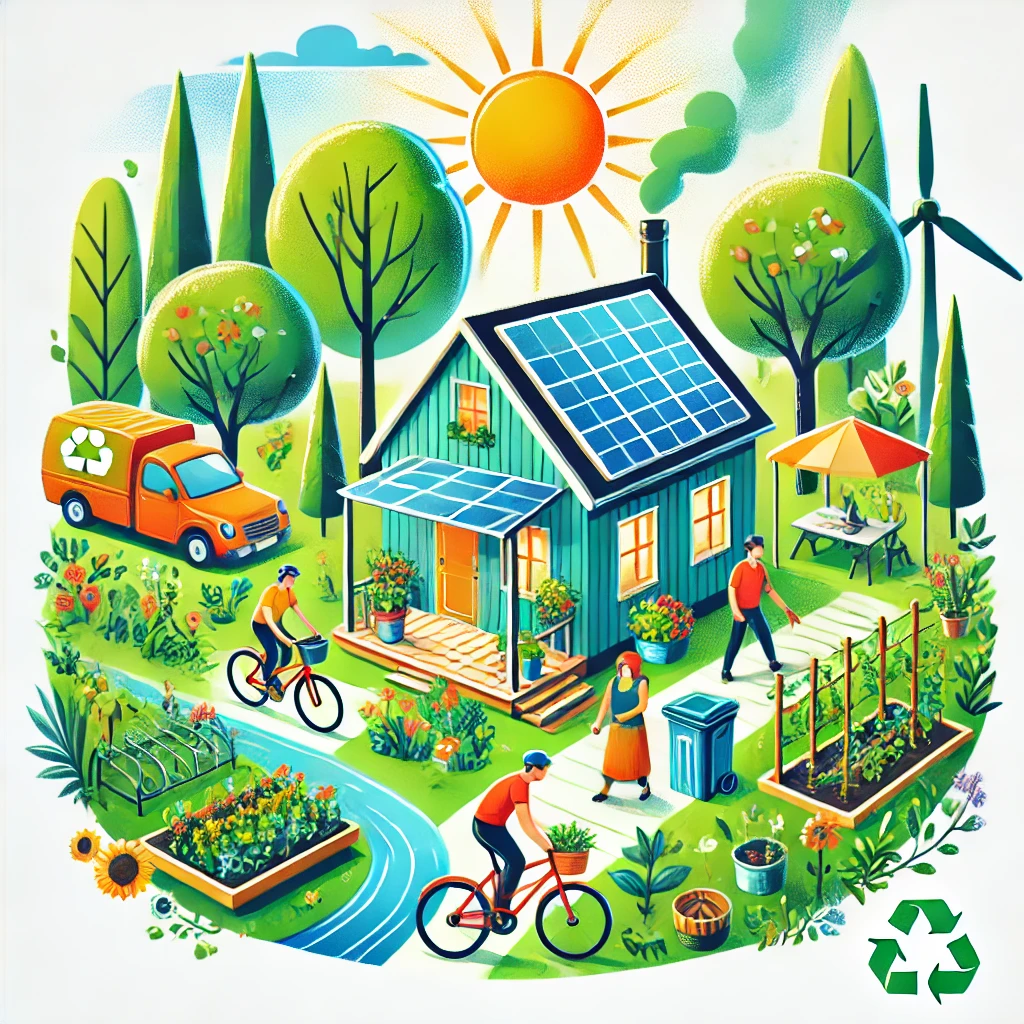In recent years, sustainable living has evolved from a niche concern into a mainstream movement. With growing awareness about climate change, resource depletion, and environmental degradation, individuals and communities worldwide are taking steps to adopt eco-friendly practices. This article explores the reasons behind the rise of sustainable living, its benefits, and actionable steps to integrate sustainability into daily life.
Why Sustainable Living Matters
The planet’s resources are finite, yet humanity’s consumption patterns suggest otherwise. Overconsumption, waste, and pollution have led to significant environmental challenges. The Intergovernmental Panel on Climate Change (IPCC) reports that global temperatures are rising at an unprecedented rate, primarily due to human activities. This has resulted in severe weather patterns, melting glaciers, and rising sea levels.
Sustainable living is a proactive approach to mitigate these effects. It emphasizes reducing waste, conserving energy, and using resources responsibly. By adopting sustainable practices, individuals can contribute to a healthier planet and ensure that future generations inherit a world capable of supporting life.
Benefits of Sustainable Living
1. Environmental Protection
Sustainable living helps reduce the carbon footprint by minimizing waste, conserving water, and using renewable energy sources. Practices such as recycling, composting, and reducing single-use plastics significantly reduce pollution and conserve natural resources.
2. Economic Savings
While some sustainable products may have a higher upfront cost, they often lead to long-term savings. For instance, energy-efficient appliances, solar panels, and LED lighting reduce electricity bills. Additionally, growing your own vegetables or buying locally reduces transportation costs and supports local economies.
3. Improved Health
Sustainability often involves consuming fresh, organic, and locally sourced foods, which are free from harmful chemicals. Reducing reliance on fossil fuels also improves air quality, reducing respiratory and cardiovascular issues.
4. Enhanced Quality of Life
Living sustainably fosters a sense of community and responsibility. It encourages individuals to adopt minimalist lifestyles, focusing on experiences and relationships rather than material possessions. This often leads to greater mental well-being and satisfaction.
Steps to Embrace Sustainable Living
1. Reduce, Reuse, Recycle
The three Rs form the foundation of sustainable living. Reduce waste by avoiding unnecessary purchases. Reuse items like glass jars and cloth bags. Recycle materials such as paper, plastic, and metal to minimize landfill contributions.
2. Conserve Energy and Water
Simple actions like turning off lights when not in use, using energy-efficient appliances, and fixing leaky faucets can make a significant difference. Installing solar panels and rainwater harvesting systems are more extensive measures that yield long-term benefits.
3. Choose Sustainable Transportation
Opt for public transport, carpooling, biking, or walking whenever possible. Electric and hybrid vehicles are excellent alternatives to traditional gas-powered cars.
4. Support Eco-Friendly Products
Purchase goods from companies that prioritize sustainability. Look for certifications like Fair Trade, USDA Organic, and Energy Star when shopping. Avoid fast fashion by choosing durable, high-quality clothing.
5. Advocate and Educate
Spread awareness about the importance of sustainability, and consider eco-friendly options when selecting a lovers day gift. Join local environmental groups, participate in community clean-up drives, and encourage others to adopt green practices.
The Role of Technology in Sustainability
Technology plays a crucial role in advancing sustainable living. Innovations like smart home systems optimize energy usage, while apps help track carbon footprints and suggest eco-friendly practices. Renewable energy technologies, such as wind and solar power, are becoming more accessible and affordable, further encouraging widespread adoption.
Conclusion
The transition to sustainable living is no longer optional—it is a necessity. By making conscious choices, individuals can significantly impact the environment, economy, and society. While the journey may seem daunting, every small step contributes to a larger movement toward a sustainable future. Together, we can create a world that prioritizes harmony with nature and ensures the well-being of generations to come.
